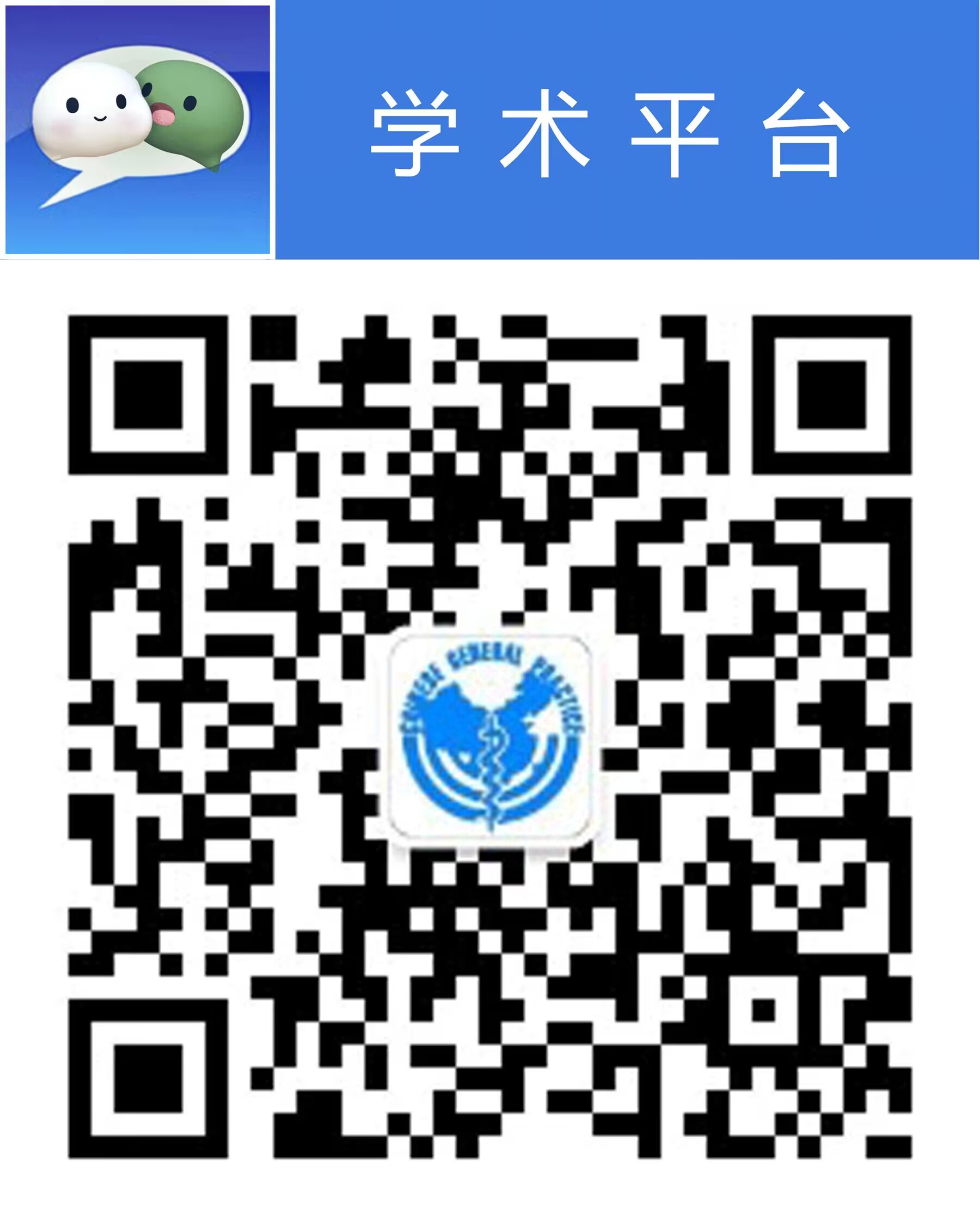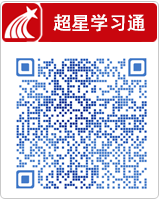中国全科医学 ›› 2025, Vol. 28 ›› Issue (21): 2652-2660.DOI: 10.12114/j.issn.1007-9572.2024.0456
罗金萍1,2,3, 孙嘉颖1,2,3, 牟艺帆1,2,3, 耿铭慧1,2,3, 张宝轩1,2,3, 王康4, 尹文强1,2,3, 陈钟鸣1,2,3, 马东平1,2,3,*( )
)
收稿日期:2024-10-08
修回日期:2024-12-03
出版日期:2025-07-20
发布日期:2025-06-05
通讯作者:
马东平
作者贡献:
罗金萍、马东平负责论文的构思与撰写;罗金萍、孙嘉颖负责论文的可行性分析;罗金萍、孙嘉颖、牟艺帆、耿铭慧、张宝轩、王康、尹文强、陈钟鸣、马东平参与了论文的修订;马东平负责论文的质量控制和审查,对文章整体负责,监督管理。
基金资助:
LUO Jinping1,2,3, SUN Jiaying1,2,3, MOU Yifan1,2,3, GENG Minghui1,2,3, ZHANG Baoxuan1,2,3, WANG Kang4, YIN Wenqiang1,2,3, CHEN Zhongming1,2,3, MA Dongping1,2,3,*( )
)
Received:2024-10-08
Revised:2024-12-03
Published:2025-07-20
Online:2025-06-05
Contact:
MA Dongping
摘要: 背景 儿童作为特殊群体受到公众的关注,虽然近年来发布了一系列政策保障儿童用药安全,但仍存在药物适宜品种少、不合理用药等问题,亟需科学合理的儿童用药政策推动其发展。 目的 对我国儿童用药政策文本进行量化评价,为未来的儿童用药政策的制订和完善提供参考,从而推动儿童用药事业的高质量发展。 方法 基于文本挖掘法对2014—2023年国家层面出台的23份儿童用药政策文件进行处理,构建儿童用药政策的政策建模一致性(PMC)指数模型,通过10个一级变量和41个二级变量对我国23项儿童用药政策进行量化评价分析。 结果 23项儿童用药政策的PMC指数均值为5.65,PMC凹陷指数均值为4.35,包括1项优秀级政策、17项良好级政策和5项合格级政策,无完美级政策和不良政策;23项儿童用药政策在政策工具和政策受体上得分较高,在发布机构和政策时效上得分较低。 结论 我国儿童用药政策总体上处于良好水平,可从政策时效、发布机构和政策内容方面进一步完善。
中图分类号:
| 政策编号 | 政策名称 | 发文机构 | 发布时间 |
|---|---|---|---|
| P1 | 关于保障儿童用药的若干意见[ | 原国家卫生计生委员会、国家发展改革委员会、工业和信息化部、人力资源社会保障部、原国家食品药品监管总局 | 2014-05-21 |
| P2 | 关于发布儿科人群药代动力学研究技术指导原则的通知[ | 原国家食品药品监督管理总局 | 2014-07-11 |
| P3 | 关于成立国家卫生计生委儿童用药专家委员会的通知[ | 原国家卫生计生委办公厅 | 2015-03-03 |
| P4 | 关于进一步加强医疗机构儿童用药配备使用工作的通知[ | 原国家卫生计生委办公厅 | 2015-08-24 |
| P5 | 关于发布儿科人群药物临床试验技术指导原则的通告[ | 原国家食品药品监督管理总局 | 2016-03-01 |
| P6 | 关于印发首批鼓励研发申报儿童药品清单的通知[ | 原国家卫生计生委办公厅、工业和信息化部办公厅、原食品药品监管总局办公厅 | 2016-05-31 |
| P7 | 关于发布成人用药数据外推至儿科人群的技术指导原则的通告[ | 原国家食品药品监督管理总局 | 2017-05-16 |
| P8 | 关于印发第二批鼓励研发申报儿童药品清单的通知[ | 原国家卫生计生委办公厅、工业和信息化部办公厅、原食品药品监管总局办公厅 | 2017-05-26 |
| P9 | 关于印发第三批鼓励研发申报儿童药品清单的通知[ | 国家卫生健康委办公厅、工业和信息化部办公厅、国家药监局综合司 | 2019-07-22 |
| P10 | 关于印发国家卫生健康委第二届儿童用药专家委员会名单的通知[ | 国家卫生健康委办公厅 | 2020-06-30 |
| P11 | 关于加强儿童抗菌药物临床应用监测和细菌耐药监测工作的通知[ | 国家卫生健康委办公厅 | 2020-07-17 |
| P12 | 关于发布《真实世界研究支持儿童药物研发与审评的技术指导原则(试行)》的通告[ | 国家药品监督管理局药品审评中心 | 2020-08-27 |
| P13 | 关于发布《儿科用药临床药理学研究技术指导原则》的通告[ | 国家药品监督管理局药品审评中心 | 2020-12-31 |
| P14 | 关于发布《儿童用药(化学药品)药学开发指导原则(试行)》的通告[ | 国家药品监督管理局药品审评中心 | 2020-12-31 |
| P15 | 关于发布《化学药品和治疗用生物制品说明书中儿童用药相关信息撰写的技术指导原则(试行)》的通告[ | 国家药品监督管理局药品审评中心 | 2021-09-03 |
| P16 | 关于发布《儿童用药口感设计与评价的技术指导原则(试行)》的通告[ | 国家药品监督管理局药品审评中心 | 2022-10-28 |
| P17 | 关于加强疫情期间儿童用医疗机构配制制剂调剂使用有关工作的通知[ | 国务院应对新型冠状病毒肺炎疫情联防联控机制医疗救治组、国家中医药管理局综合司、国家药品监督管理局综合司 | 2022-12-15 |
| P18 | 关于进一步加强儿童临床用药管理工作的通知[ | 国家卫生健康委办公厅 | 2023-01-16 |
| P19 | 关于发布《儿童抗肿瘤药物临床研发技术指导原则》的通告[ | 国家药品监督管理局药品审评中心 | 2023-03-22 |
| P20 | 关于发布《生理药代动力学模型在儿科人群药物研发中应用的技术指导原则》的通告[ | 国家药品监督管理局药品审评中心 | 2023-03-27 |
| P21 | 关于发布《成人用药数据外推至儿科人群的定量方法学指导原则(试行)》的通告[ | 国家药品监督管理局药品审评中心 | 2023-04-12 |
| P22 | 关于发布《已上市药品说明书增加儿童用药信息工作程序(试行)》的公告[ | 国家药品监督管理局 | 2023-05-29 |
| P23 | 关于印发第四批鼓励研发申报儿童药品清单的通知[ | 国家卫生健康委办公厅、科技部办公厅、工业和信息化部办公厅、国家药监局综合司 | 2023-08-22 |
表1 儿童用药政策文件示例
Table 1 Examples of policy documents on medication for children
| 政策编号 | 政策名称 | 发文机构 | 发布时间 |
|---|---|---|---|
| P1 | 关于保障儿童用药的若干意见[ | 原国家卫生计生委员会、国家发展改革委员会、工业和信息化部、人力资源社会保障部、原国家食品药品监管总局 | 2014-05-21 |
| P2 | 关于发布儿科人群药代动力学研究技术指导原则的通知[ | 原国家食品药品监督管理总局 | 2014-07-11 |
| P3 | 关于成立国家卫生计生委儿童用药专家委员会的通知[ | 原国家卫生计生委办公厅 | 2015-03-03 |
| P4 | 关于进一步加强医疗机构儿童用药配备使用工作的通知[ | 原国家卫生计生委办公厅 | 2015-08-24 |
| P5 | 关于发布儿科人群药物临床试验技术指导原则的通告[ | 原国家食品药品监督管理总局 | 2016-03-01 |
| P6 | 关于印发首批鼓励研发申报儿童药品清单的通知[ | 原国家卫生计生委办公厅、工业和信息化部办公厅、原食品药品监管总局办公厅 | 2016-05-31 |
| P7 | 关于发布成人用药数据外推至儿科人群的技术指导原则的通告[ | 原国家食品药品监督管理总局 | 2017-05-16 |
| P8 | 关于印发第二批鼓励研发申报儿童药品清单的通知[ | 原国家卫生计生委办公厅、工业和信息化部办公厅、原食品药品监管总局办公厅 | 2017-05-26 |
| P9 | 关于印发第三批鼓励研发申报儿童药品清单的通知[ | 国家卫生健康委办公厅、工业和信息化部办公厅、国家药监局综合司 | 2019-07-22 |
| P10 | 关于印发国家卫生健康委第二届儿童用药专家委员会名单的通知[ | 国家卫生健康委办公厅 | 2020-06-30 |
| P11 | 关于加强儿童抗菌药物临床应用监测和细菌耐药监测工作的通知[ | 国家卫生健康委办公厅 | 2020-07-17 |
| P12 | 关于发布《真实世界研究支持儿童药物研发与审评的技术指导原则(试行)》的通告[ | 国家药品监督管理局药品审评中心 | 2020-08-27 |
| P13 | 关于发布《儿科用药临床药理学研究技术指导原则》的通告[ | 国家药品监督管理局药品审评中心 | 2020-12-31 |
| P14 | 关于发布《儿童用药(化学药品)药学开发指导原则(试行)》的通告[ | 国家药品监督管理局药品审评中心 | 2020-12-31 |
| P15 | 关于发布《化学药品和治疗用生物制品说明书中儿童用药相关信息撰写的技术指导原则(试行)》的通告[ | 国家药品监督管理局药品审评中心 | 2021-09-03 |
| P16 | 关于发布《儿童用药口感设计与评价的技术指导原则(试行)》的通告[ | 国家药品监督管理局药品审评中心 | 2022-10-28 |
| P17 | 关于加强疫情期间儿童用医疗机构配制制剂调剂使用有关工作的通知[ | 国务院应对新型冠状病毒肺炎疫情联防联控机制医疗救治组、国家中医药管理局综合司、国家药品监督管理局综合司 | 2022-12-15 |
| P18 | 关于进一步加强儿童临床用药管理工作的通知[ | 国家卫生健康委办公厅 | 2023-01-16 |
| P19 | 关于发布《儿童抗肿瘤药物临床研发技术指导原则》的通告[ | 国家药品监督管理局药品审评中心 | 2023-03-22 |
| P20 | 关于发布《生理药代动力学模型在儿科人群药物研发中应用的技术指导原则》的通告[ | 国家药品监督管理局药品审评中心 | 2023-03-27 |
| P21 | 关于发布《成人用药数据外推至儿科人群的定量方法学指导原则(试行)》的通告[ | 国家药品监督管理局药品审评中心 | 2023-04-12 |
| P22 | 关于发布《已上市药品说明书增加儿童用药信息工作程序(试行)》的公告[ | 国家药品监督管理局 | 2023-05-29 |
| P23 | 关于印发第四批鼓励研发申报儿童药品清单的通知[ | 国家卫生健康委办公厅、科技部办公厅、工业和信息化部办公厅、国家药监局综合司 | 2023-08-22 |
| 序号 | 高频词 | 词频(次) | 序号 | 高频词 | 词频(次) | 序号 | 高频词 | 词频(次) | 序号 | 高频词 | 词频(次) | 序号 | 高频词 | 词频(次) |
|---|---|---|---|---|---|---|---|---|---|---|---|---|---|---|
| 1 | 儿童 | 1 011 | 9 | 用药 | 358 | 17 | 研发 | 224 | 25 | 治疗 | 169 | 33 | 影响 | 136 |
| 2 | 药物 | 723 | 10 | 药品 | 325 | 18 | 制剂 | 218 | 26 | 安全性 | 167 | 34 | 开发 | 136 |
| 3 | 临床 | 612 | 11 | 剂量 | 289 | 19 | 暴露 | 217 | 27 | 国家 | 163 | 35 | 风险 | 135 |
| 4 | 研究 | 602 | 12 | 儿科 | 253 | 20 | 原则 | 211 | 28 | 分析 | 158 | 36 | 选择 | 132 |
| 5 | 儿科人群 | 518 | 13 | 人群 | 252 | 21 | 指导 | 200 | 29 | 开展 | 157 | 37 | 目标 | 131 |
| 6 | 数据 | 436 | 14 | 使用 | 231 | 22 | 动力学 | 190 | 30 | 医院 | 146 | 38 | 设计 | 129 |
| 7 | 成人 | 436 | 15 | 评价 | 226 | 23 | 患者 | 173 | 31 | 应用 | 145 | 39 | 肿瘤 | 126 |
| 8 | 试验 | 392 | 16 | 方法 | 225 | 24 | 模型 | 169 | 32 | 技术 | 144 | 40 | 剂型 | 118 |
表2 我国儿童用药政策高频词汇总
Table 2 Summary of high-frequency words in China's children's medication policy
| 序号 | 高频词 | 词频(次) | 序号 | 高频词 | 词频(次) | 序号 | 高频词 | 词频(次) | 序号 | 高频词 | 词频(次) | 序号 | 高频词 | 词频(次) |
|---|---|---|---|---|---|---|---|---|---|---|---|---|---|---|
| 1 | 儿童 | 1 011 | 9 | 用药 | 358 | 17 | 研发 | 224 | 25 | 治疗 | 169 | 33 | 影响 | 136 |
| 2 | 药物 | 723 | 10 | 药品 | 325 | 18 | 制剂 | 218 | 26 | 安全性 | 167 | 34 | 开发 | 136 |
| 3 | 临床 | 612 | 11 | 剂量 | 289 | 19 | 暴露 | 217 | 27 | 国家 | 163 | 35 | 风险 | 135 |
| 4 | 研究 | 602 | 12 | 儿科 | 253 | 20 | 原则 | 211 | 28 | 分析 | 158 | 36 | 选择 | 132 |
| 5 | 儿科人群 | 518 | 13 | 人群 | 252 | 21 | 指导 | 200 | 29 | 开展 | 157 | 37 | 目标 | 131 |
| 6 | 数据 | 436 | 14 | 使用 | 231 | 22 | 动力学 | 190 | 30 | 医院 | 146 | 38 | 设计 | 129 |
| 7 | 成人 | 436 | 15 | 评价 | 226 | 23 | 患者 | 173 | 31 | 应用 | 145 | 39 | 肿瘤 | 126 |
| 8 | 试验 | 392 | 16 | 方法 | 225 | 24 | 模型 | 169 | 32 | 技术 | 144 | 40 | 剂型 | 118 |
| 一级变量 | 二级变量 | 二级变量评价标准 | 变量来源 |
|---|---|---|---|
| X1政策性质 | X1:1指导 | 是否具有指导性,如政府引导、规范宣传等内容,是为1,否为0 | 基于张永安等[ |
| X1:2建议 | 是否具有建议性,如为儿童用药政策的发展提供意见,是为1,否为0 | ||
| X1:3描述 | 是否具有描述性,如涉及临床研究、药品价格、药品调剂、药物研发等细节内容,是为1,否为0 | ||
| X1:4监管 | 是否具有监管性,如使用全过程监管等内容,是为1,否为0 | ||
| X1:5试验 | 是否具有试验性,如开展儿童用药临床试验等内容,是为1,否为0 | ||
| X1:6预测 | 是否具有预测性,如采用建模方式对儿科人群剂量进行预测等内容,是为1,否为0 | ||
| X2政策时效 | X2:1试行 | 是否为试行内容,是为1,否为0 | 基于张永安等[ |
| X2:2短期(<3年) | 是否为3年以下内容,是为1,否为0 | ||
| X2:3中期(3~5年) | 是否为3~5年内容,是为1,否为0 | ||
| X2:4长期(>5年) | 是否为5年以上内容,是为1,否为0 | ||
| X3政策工具 | X3:1供给型 | 是否涉及政府通过资金、科研、人才等措施完善用药供给等内容,是为1,否为0 | 基于荣红国等[ |
| X3:2需求型 | 是否涉及鼓励服务外包、合作与交流等内容,是为1,否为0 | ||
| X3:3环境型 | 是否涉及政策宣传、医保支持等内容,是为1,否为0 | ||
| X4发布机构 | X4:1国务院 | 是否为国务院发文,是为1,否为0 | 基于张永安等[ |
| X4:2国家卫生健康委 | 是否为国家卫生健康委发文,是为1,否为0 | ||
| X4:3国家药品监督管理局 | 是否为国家药品监督管理局发文,是为1,否为0 | ||
| X4:4其他 | 是否为其他机构发文,是为1,否为0 | ||
| X5政策受体 | X5:1政府部门 | 是否涉及政府部门,是为1,否为0 | 基于苏沁凝等[ |
| X5:2医疗机构 | 是否涉及医疗机构,是为1,否为0 | ||
| X5:3企业 | 是否涉及企业,是为1,否为0 | ||
| X5:4患者 | 是否涉及患者,是为1,否为0 | ||
| X6政策目标 | X6:1保障儿童用药安全 | 是否涉及保障儿童用药安全,是为1,否为0 | 基于政策文本挖掘修改 |
| X6:2满足儿童用药需求 | 是否涉及满足儿童用药需求,是为1,否为0 | ||
| X6:3鼓励儿童药物研发 | 是否涉及鼓励儿童药物研发,是为1,否为0 | ||
| X6:4完善儿童用药信息 | 是否涉及完善儿童用药信息,是为1,否为0 | ||
| X7政策内容 | X7:1临床研究 | 是否涉及临床研究,是为1,否为0 | 基于政策文本挖掘修改 |
| X7:2药品价格 | 是否涉及药品价格,是为1,否为0 | ||
| X7:3药品调剂 | 是否涉及药品调剂,是为1,否为0 | ||
| X7:4药物研发 | 是否涉及药物研发,是为1,否为0 | ||
| X7:5用药评估 | 是否涉及用药评估,是为1,否为0 | ||
| X7:6动态监测 | 是否涉及动态监测,是为1,否为0 | ||
| X7:7药品采购 | 是否涉及药品采购,是为1,否为0 | ||
| X7:8用药宣传 | 是否涉及用药宣传,是为1,否为0 | ||
| X8激励措施 | X8:1优先审批 | 是否涉及优先审批,是为1,否为0 | 基于赵思琦等[ |
| X8:2人才队伍 | 是否涉及人才队伍,是为1,否为0 | ||
| X8:3政策扶持 | 是否涉及政策扶持,是为1,否为0 | ||
| X8:4技术支持 | 是否涉及技术支持,是为1,否为0 | ||
| X8:5数据共享 | 是否涉及数据共享,是为1,否为0 | ||
| X8:6绩效考核 | 是否涉及绩效考核,是为1,否为0 | ||
| X9政策视角 | X9:1宏观 | 是否为宏观视角,如更全面地对儿童用药提出意见等内容,是为1,否为0 | 基于楚美金等[ |
| X9:2微观 | 是否为微观视角,如更具体地对儿童用药某一方面提供指导原则等内容,是为1,否为0 | ||
| X10政策公开 | — | 是否公开,是为1,否为0 | 基于苏沁凝等[ |
表3 我国儿童用药政策的变量设置
Table 3 Variable setting of China's pediatric medication policy
| 一级变量 | 二级变量 | 二级变量评价标准 | 变量来源 |
|---|---|---|---|
| X1政策性质 | X1:1指导 | 是否具有指导性,如政府引导、规范宣传等内容,是为1,否为0 | 基于张永安等[ |
| X1:2建议 | 是否具有建议性,如为儿童用药政策的发展提供意见,是为1,否为0 | ||
| X1:3描述 | 是否具有描述性,如涉及临床研究、药品价格、药品调剂、药物研发等细节内容,是为1,否为0 | ||
| X1:4监管 | 是否具有监管性,如使用全过程监管等内容,是为1,否为0 | ||
| X1:5试验 | 是否具有试验性,如开展儿童用药临床试验等内容,是为1,否为0 | ||
| X1:6预测 | 是否具有预测性,如采用建模方式对儿科人群剂量进行预测等内容,是为1,否为0 | ||
| X2政策时效 | X2:1试行 | 是否为试行内容,是为1,否为0 | 基于张永安等[ |
| X2:2短期(<3年) | 是否为3年以下内容,是为1,否为0 | ||
| X2:3中期(3~5年) | 是否为3~5年内容,是为1,否为0 | ||
| X2:4长期(>5年) | 是否为5年以上内容,是为1,否为0 | ||
| X3政策工具 | X3:1供给型 | 是否涉及政府通过资金、科研、人才等措施完善用药供给等内容,是为1,否为0 | 基于荣红国等[ |
| X3:2需求型 | 是否涉及鼓励服务外包、合作与交流等内容,是为1,否为0 | ||
| X3:3环境型 | 是否涉及政策宣传、医保支持等内容,是为1,否为0 | ||
| X4发布机构 | X4:1国务院 | 是否为国务院发文,是为1,否为0 | 基于张永安等[ |
| X4:2国家卫生健康委 | 是否为国家卫生健康委发文,是为1,否为0 | ||
| X4:3国家药品监督管理局 | 是否为国家药品监督管理局发文,是为1,否为0 | ||
| X4:4其他 | 是否为其他机构发文,是为1,否为0 | ||
| X5政策受体 | X5:1政府部门 | 是否涉及政府部门,是为1,否为0 | 基于苏沁凝等[ |
| X5:2医疗机构 | 是否涉及医疗机构,是为1,否为0 | ||
| X5:3企业 | 是否涉及企业,是为1,否为0 | ||
| X5:4患者 | 是否涉及患者,是为1,否为0 | ||
| X6政策目标 | X6:1保障儿童用药安全 | 是否涉及保障儿童用药安全,是为1,否为0 | 基于政策文本挖掘修改 |
| X6:2满足儿童用药需求 | 是否涉及满足儿童用药需求,是为1,否为0 | ||
| X6:3鼓励儿童药物研发 | 是否涉及鼓励儿童药物研发,是为1,否为0 | ||
| X6:4完善儿童用药信息 | 是否涉及完善儿童用药信息,是为1,否为0 | ||
| X7政策内容 | X7:1临床研究 | 是否涉及临床研究,是为1,否为0 | 基于政策文本挖掘修改 |
| X7:2药品价格 | 是否涉及药品价格,是为1,否为0 | ||
| X7:3药品调剂 | 是否涉及药品调剂,是为1,否为0 | ||
| X7:4药物研发 | 是否涉及药物研发,是为1,否为0 | ||
| X7:5用药评估 | 是否涉及用药评估,是为1,否为0 | ||
| X7:6动态监测 | 是否涉及动态监测,是为1,否为0 | ||
| X7:7药品采购 | 是否涉及药品采购,是为1,否为0 | ||
| X7:8用药宣传 | 是否涉及用药宣传,是为1,否为0 | ||
| X8激励措施 | X8:1优先审批 | 是否涉及优先审批,是为1,否为0 | 基于赵思琦等[ |
| X8:2人才队伍 | 是否涉及人才队伍,是为1,否为0 | ||
| X8:3政策扶持 | 是否涉及政策扶持,是为1,否为0 | ||
| X8:4技术支持 | 是否涉及技术支持,是为1,否为0 | ||
| X8:5数据共享 | 是否涉及数据共享,是为1,否为0 | ||
| X8:6绩效考核 | 是否涉及绩效考核,是为1,否为0 | ||
| X9政策视角 | X9:1宏观 | 是否为宏观视角,如更全面地对儿童用药提出意见等内容,是为1,否为0 | 基于楚美金等[ |
| X9:2微观 | 是否为微观视角,如更具体地对儿童用药某一方面提供指导原则等内容,是为1,否为0 | ||
| X10政策公开 | — | 是否公开,是为1,否为0 | 基于苏沁凝等[ |
| PMC指数 | 9~10 | 7~<9 | 5~<7 | 3~<5 | 0~<3 |
|---|---|---|---|---|---|
| 等级评价 | 完美 | 优秀 | 良好 | 合格 | 不良 |
表4 政策评分等级
Table 4 Policy rating scale
| PMC指数 | 9~10 | 7~<9 | 5~<7 | 3~<5 | 0~<3 |
|---|---|---|---|---|---|
| 等级评价 | 完美 | 优秀 | 良好 | 合格 | 不良 |
| 坐标 | 1 | 2 | 3 |
|---|---|---|---|
| 系列1 | X1(1,1) | X2(2,1) | X3(3,1) |
| 系列2 | X4(1,2) | X5(2,2) | X6(3,2) |
| 系列3 | X7(1,3) | X8(2,3) | X9(3,3) |
表5 PMC曲面图对应的坐标
Table 5 Coordinates corresponding to the PMC surface map
| 坐标 | 1 | 2 | 3 |
|---|---|---|---|
| 系列1 | X1(1,1) | X2(2,1) | X3(3,1) |
| 系列2 | X4(1,2) | X5(2,2) | X6(3,2) |
| 系列3 | X7(1,3) | X8(2,3) | X9(3,3) |
| 政策编号 | X1 | X2 | X3 | X4 | X5 | X6 | X7 | X8 | X9 | X10 | PMC指数 | PMC凹陷指数 | PMC指数排名 | 政策等级 |
|---|---|---|---|---|---|---|---|---|---|---|---|---|---|---|
| P1 | 0.83 | 0.25 | 1.00 | 0.75 | 1.00 | 0.50 | 0.75 | 0.83 | 0.50 | 1.00 | 7.42 | 2.58 | 1 | 优秀 |
| P2 | 0.83 | 0.25 | 0.67 | 0.25 | 0.50 | 0.50 | 0.63 | 0.67 | 0.50 | 1.00 | 5.79 | 4.21 | 12 | 良好 |
| P3 | 0.33 | 0.25 | 0.67 | 0.25 | 0.50 | 0.75 | 0.38 | 0.67 | 0.50 | 1.00 | 5.29 | 4.71 | 18 | 良好 |
| P4 | 0.50 | 0.25 | 1.00 | 0.25 | 0.50 | 0.50 | 0.38 | 0.67 | 0.50 | 1.00 | 5.54 | 4.46 | 15 | 良好 |
| P5 | 0.83 | 0.25 | 0.67 | 0.25 | 0.50 | 0.75 | 0.63 | 0.50 | 0.50 | 1.00 | 5.88 | 4.13 | 10 | 良好 |
| P6 | 0.17 | 0.25 | 0.33 | 0.75 | 0.75 | 0.50 | 0.25 | 0.17 | 0.50 | 1.00 | 4.67 | 5.33 | 20 | 合格 |
| P7 | 0.83 | 0.25 | 0.67 | 0.25 | 0.75 | 0.75 | 0.50 | 0.50 | 0.50 | 1.00 | 6.00 | 4.00 | 6 | 良好 |
| P8 | 0.17 | 0.25 | 0.33 | 0.75 | 0.50 | 0.50 | 0.25 | 0.33 | 0.50 | 1.00 | 4.58 | 5.42 | 21 | 合格 |
| P9 | 0.17 | 0.25 | 0.33 | 0.75 | 0.50 | 0.50 | 0.25 | 0.33 | 0.50 | 1.00 | 4.58 | 5.42 | 21 | 合格 |
| P10 | 0.33 | 0.25 | 0.67 | 0.25 | 0.50 | 0.25 | 0.13 | 0.50 | 0.50 | 1.00 | 4.38 | 5.63 | 23 | 合格 |
| P11 | 0.67 | 0.25 | 1.00 | 0.25 | 0.50 | 0.50 | 0.38 | 0.83 | 0.50 | 1.00 | 5.88 | 4.13 | 10 | 良好 |
| P12 | 1.00 | 0.25 | 1.00 | 0.25 | 1.00 | 0.25 | 0.63 | 0.50 | 0.50 | 1.00 | 6.38 | 3.63 | 2 | 良好 |
| P13 | 1.00 | 0.25 | 1.00 | 0.25 | 0.75 | 0.25 | 0.50 | 0.50 | 0.50 | 1.00 | 6.00 | 4.00 | 6 | 良好 |
| P14 | 1.00 | 0.25 | 1.00 | 0.25 | 1.00 | 0.50 | 0.50 | 0.33 | 0.50 | 1.00 | 6.33 | 3.67 | 3 | 良好 |
| P15 | 0.67 | 0.25 | 0.67 | 0.25 | 0.75 | 0.50 | 0.50 | 0.50 | 0.50 | 1.00 | 5.58 | 4.42 | 14 | 良好 |
| P16 | 0.67 | 0.25 | 1.00 | 0.25 | 0.50 | 0.75 | 0.50 | 0.50 | 0.50 | 1.00 | 5.92 | 4.08 | 9 | 良好 |
| P17 | 0.50 | 0.25 | 0.67 | 0.75 | 0.50 | 0.50 | 0.38 | 0.50 | 0.50 | 1.00 | 5.54 | 4.46 | 15 | 良好 |
| P18 | 0.50 | 0.25 | 0.67 | 0.25 | 0.75 | 0.50 | 0.63 | 1.00 | 0.50 | 1.00 | 6.04 | 3.96 | 5 | 良好 |
| P19 | 1.00 | 0.25 | 1.00 | 0.25 | 1.00 | 0.25 | 0.50 | 0.50 | 0.50 | 1.00 | 6.25 | 3.75 | 4 | 良好 |
| P20 | 0.83 | 0.25 | 1.00 | 0.25 | 0.75 | 0.25 | 0.63 | 0.50 | 0.50 | 1.00 | 5.96 | 4.04 | 8 | 良好 |
| P21 | 0.83 | 0.25 | 0.67 | 0.25 | 0.75 | 0.25 | 0.63 | 0.50 | 0.50 | 1.00 | 5.63 | 4.38 | 13 | 良好 |
| P22 | 0.50 | 0.25 | 0.33 | 0.25 | 0.75 | 0.50 | 0.38 | 0.33 | 0.50 | 1.00 | 4.79 | 5.21 | 19 | 合格 |
| P23 | 0.33 | 0.25 | 1.00 | 0.75 | 0.75 | 0.50 | 0.25 | 0.17 | 0.50 | 1.00 | 5.50 | 4.50 | 17 | 良好 |
| 均值 | 0.63 | 0.25 | 0.75 | 0.38 | 0.68 | 0.48 | 0.46 | 0.51 | 0.50 | 1.00 | 5.65 | 4.35 | — | 良好 |
表6 儿童用药政策PMC指数得分
Table 6 PMC index score for pediatric medication policy
| 政策编号 | X1 | X2 | X3 | X4 | X5 | X6 | X7 | X8 | X9 | X10 | PMC指数 | PMC凹陷指数 | PMC指数排名 | 政策等级 |
|---|---|---|---|---|---|---|---|---|---|---|---|---|---|---|
| P1 | 0.83 | 0.25 | 1.00 | 0.75 | 1.00 | 0.50 | 0.75 | 0.83 | 0.50 | 1.00 | 7.42 | 2.58 | 1 | 优秀 |
| P2 | 0.83 | 0.25 | 0.67 | 0.25 | 0.50 | 0.50 | 0.63 | 0.67 | 0.50 | 1.00 | 5.79 | 4.21 | 12 | 良好 |
| P3 | 0.33 | 0.25 | 0.67 | 0.25 | 0.50 | 0.75 | 0.38 | 0.67 | 0.50 | 1.00 | 5.29 | 4.71 | 18 | 良好 |
| P4 | 0.50 | 0.25 | 1.00 | 0.25 | 0.50 | 0.50 | 0.38 | 0.67 | 0.50 | 1.00 | 5.54 | 4.46 | 15 | 良好 |
| P5 | 0.83 | 0.25 | 0.67 | 0.25 | 0.50 | 0.75 | 0.63 | 0.50 | 0.50 | 1.00 | 5.88 | 4.13 | 10 | 良好 |
| P6 | 0.17 | 0.25 | 0.33 | 0.75 | 0.75 | 0.50 | 0.25 | 0.17 | 0.50 | 1.00 | 4.67 | 5.33 | 20 | 合格 |
| P7 | 0.83 | 0.25 | 0.67 | 0.25 | 0.75 | 0.75 | 0.50 | 0.50 | 0.50 | 1.00 | 6.00 | 4.00 | 6 | 良好 |
| P8 | 0.17 | 0.25 | 0.33 | 0.75 | 0.50 | 0.50 | 0.25 | 0.33 | 0.50 | 1.00 | 4.58 | 5.42 | 21 | 合格 |
| P9 | 0.17 | 0.25 | 0.33 | 0.75 | 0.50 | 0.50 | 0.25 | 0.33 | 0.50 | 1.00 | 4.58 | 5.42 | 21 | 合格 |
| P10 | 0.33 | 0.25 | 0.67 | 0.25 | 0.50 | 0.25 | 0.13 | 0.50 | 0.50 | 1.00 | 4.38 | 5.63 | 23 | 合格 |
| P11 | 0.67 | 0.25 | 1.00 | 0.25 | 0.50 | 0.50 | 0.38 | 0.83 | 0.50 | 1.00 | 5.88 | 4.13 | 10 | 良好 |
| P12 | 1.00 | 0.25 | 1.00 | 0.25 | 1.00 | 0.25 | 0.63 | 0.50 | 0.50 | 1.00 | 6.38 | 3.63 | 2 | 良好 |
| P13 | 1.00 | 0.25 | 1.00 | 0.25 | 0.75 | 0.25 | 0.50 | 0.50 | 0.50 | 1.00 | 6.00 | 4.00 | 6 | 良好 |
| P14 | 1.00 | 0.25 | 1.00 | 0.25 | 1.00 | 0.50 | 0.50 | 0.33 | 0.50 | 1.00 | 6.33 | 3.67 | 3 | 良好 |
| P15 | 0.67 | 0.25 | 0.67 | 0.25 | 0.75 | 0.50 | 0.50 | 0.50 | 0.50 | 1.00 | 5.58 | 4.42 | 14 | 良好 |
| P16 | 0.67 | 0.25 | 1.00 | 0.25 | 0.50 | 0.75 | 0.50 | 0.50 | 0.50 | 1.00 | 5.92 | 4.08 | 9 | 良好 |
| P17 | 0.50 | 0.25 | 0.67 | 0.75 | 0.50 | 0.50 | 0.38 | 0.50 | 0.50 | 1.00 | 5.54 | 4.46 | 15 | 良好 |
| P18 | 0.50 | 0.25 | 0.67 | 0.25 | 0.75 | 0.50 | 0.63 | 1.00 | 0.50 | 1.00 | 6.04 | 3.96 | 5 | 良好 |
| P19 | 1.00 | 0.25 | 1.00 | 0.25 | 1.00 | 0.25 | 0.50 | 0.50 | 0.50 | 1.00 | 6.25 | 3.75 | 4 | 良好 |
| P20 | 0.83 | 0.25 | 1.00 | 0.25 | 0.75 | 0.25 | 0.63 | 0.50 | 0.50 | 1.00 | 5.96 | 4.04 | 8 | 良好 |
| P21 | 0.83 | 0.25 | 0.67 | 0.25 | 0.75 | 0.25 | 0.63 | 0.50 | 0.50 | 1.00 | 5.63 | 4.38 | 13 | 良好 |
| P22 | 0.50 | 0.25 | 0.33 | 0.25 | 0.75 | 0.50 | 0.38 | 0.33 | 0.50 | 1.00 | 4.79 | 5.21 | 19 | 合格 |
| P23 | 0.33 | 0.25 | 1.00 | 0.75 | 0.75 | 0.50 | 0.25 | 0.17 | 0.50 | 1.00 | 5.50 | 4.50 | 17 | 良好 |
| 均值 | 0.63 | 0.25 | 0.75 | 0.38 | 0.68 | 0.48 | 0.46 | 0.51 | 0.50 | 1.00 | 5.65 | 4.35 | — | 良好 |
| [1] |
国家统计局. 中国统计年鉴2023[M]. 北京:中国统计出版社,2023.
|
| [2] | |
| [3] |
国家卫生计生委办公厅. 关于保障儿童用药的若干意见[EB/OL]. (2014-05-30)[2024-11-30].
|
| [4] |
缪静,舒强. 创新赋能儿童药物研究,技术引领儿科药学发展[J]. 中国现代应用药学,2023,40(22):3053-3056. DOI:10.13748/j.cnki.issn1007-7693.20233311.
|
| [5] |
荣红国,李琪,董玥,等. 基于政策工具的我国儿童用药政策分析[J]. 中国药房,2022,33(14):1665-1670. DOI:10.6039/j.issn.1001-0408.2022.14.01.
|
| [6] |
李新宇,邵蓉,白铭钰,等. 我国儿童药保障政策文本量化分析——基于政策工具、政策目标的二维框架[J]. 中国卫生政策研究,2022,15(8):68-73. DOI:10.3969/j.issn.1674-2982.2022.08.011.
|
| [7] | |
| [8] |
张永安,耿喆. 我国区域科技创新政策的量化评价——基于PMC指数模型[J]. 科技管理研究,2015,35(14):26-31. DOI:10.3969/j.issn.1000-7695.2015.14.006.
|
| [9] |
殷晓露,贺睿博,王华静,等. 基于PMC指数模型的我国公立医院高质量发展政策量化评价研究[J]. 中国医院,2024,28(1):7-11. DOI:10.19660/j.issn.1671-0592.2024.1.02.
|
| [10] |
王坤,魏澜. 基于PMC指数模型的产教融合政策量化评价及优化路径[J]. 成人教育,2023,43(8):63-72. DOI:10.3969/j.issn.1001-8794.2023.08.009.
|
| [11] |
国家食品药品监督管理总局. 关于发布儿科人群药代动力学研究技术指导原则的通知[EB/OL]. (2014-07-11)[2024-11-30].
|
| [12] |
国家卫生计生委办公厅. 关于成立国家卫生计生委儿童用药专家委员会的通知[EB/OL]. (2015-03-12)[2024-11-30].
|
| [13] |
国家卫生计生委办公厅. 关于进一步加强医疗机构儿童用药配备使用工作的通知[EB/OL].(2015-09-02)[2024-11-30].
|
| [14] |
国家食品药品监督管理总局. 关于发布儿科人群药物临床试验技术指导原则的通告[EB/OL]. (2016-03-07)[2024-11-30].
|
| [15] |
国家卫生计生委办公厅. 关于印发首批鼓励研发申报儿童药品清单的通知[EB/OL]. (2016-06-01)[2024-11-30].
|
| [16] |
国家食品药品监督管理总局. 关于发布成人用药数据外推至儿科人群的技术指导原则的通告[EB/OL]. (2017-05-18)[2024-11-30].
|
| [17] |
国家卫生计生委办公厅. 关于印发第二批鼓励研发申报儿童药品清单的通知[EB/OL]. (2017-05-31)[2024-11-30].
|
| [18] |
国家卫生健康委办公厅. 关于印发第三批鼓励研发申报儿童药品清单的通知[EB/OL]. (2019-08-27)[2024-11-30].
|
| [19] |
国家卫生健康委办公厅. 关于印发国家卫生健康委第二届儿童用药专家委员会名单的通知[EB/OL]. (2020-07-08)[2024-11-30].
|
| [20] |
国家卫生健康委办公厅. 关于加强儿童抗菌药物临床应用监测和细菌耐药监测工作的通知[EB/OL]. (2020-07-23)[2024-11-30].
|
| [21] |
国家药品监督管理局药品审评中心. 关于发布《真实世界研究支持儿童药物研发与审评的技术指导原则(试行)》的通告[EB/OL]. (2020-09-01)[2024-11-30].
|
| [22] |
国家药品监督管理局药品审评中心. 关于发布《儿科用药临床药理学研究技术指导原则》的通告[EB/OL]. (2020-12-31)[2024-11-30].
|
| [23] |
国家药品监督管理局药品审评中心. 关于发布《儿童用药(化学药品)药学开发指导原则(试行)》的通告[EB/OL]. (2020-12-31)[2024-11-30].
|
| [24] |
国家药品监督管理局药品审评中心. 关于发布《化学药品和治疗用生物制品说明书中儿童用药相关信息撰写的技术指导原则(试行)》的通告[EB/OL]. (2021-09-03)[2024-11-30].
|
| [25] |
国家药品监督管理局药品审评中心. 关于发布《儿童用药口感设计与评价的技术指导原则(试行)》的通告[EB/OL]. (2022-11-02)[2024-11-30].
|
| [26] |
国务院应对新型冠状病毒肺炎疫情联防联控机制医疗救治组. 关于加强疫情期间儿童用医疗机构配制制剂调剂使用有关工作的通知[EB/OL]. (2022-12-15)[2024-11-30].
|
| [27] |
国家卫生健康委办公厅. 关于进一步加强儿童临床用药管理工作的通知[EB/OL]. (2023-01-19)[2024-11-30].
|
| [28] |
国家药品监督管理局药品审评中心. 关于发布《儿童抗肿瘤药物临床研发技术指导原则》的通告[EB/OL]. (2023-03-24)[2024-11-30].
|
| [29] |
国家药品监督管理局药品审评中心. 关于发布《生理药代动力学模型在儿科人群药物研发中应用的技术指导原则》的通告[EB/OL]. (2023-03-28)[2024-11-30].
|
| [30] |
国家药品监督管理局药品审评中心. 关于发布《成人用药数据外推至儿科人群的定量方法学指导原则(试行)》的通告[EB/OL]. (2023-04-12)[2024-11-30].
|
| [31] |
国家药品监督管理局. 关于发布《已上市药品说明书增加儿童用药信息工作程序(试行)》的公告[EB/OL]. (2023-05-31)[2024-11-30].
|
| [32] |
国家卫生健康委办公厅. 关于印发第四批鼓励研发申报儿童药品清单的通知[EB/OL]. (2023-08-22)[2024-11-30].
|
| [33] |
|
| [34] |
苏沁凝,茅宁莹,朱君君. 基于PMC指数模型的我国罕见病防治与保障政策评价[J]. 中国新药与临床杂志,2024,43(2):87-95. DOI:10.14109/j.cnki.xyylc.2024.02.02.
|
| [35] |
赵思琦,刘栋梁,夏毓琦,等. 基于PMC指数模型的我国慢病管理政策量化评价[J]. 中国药房,2021,32(13):1627-1633. DOI:10.6039/j.issn.1001-0408.2021.13.16.
|
| [36] |
楚美金,徐文,马漫遥. 基于PMC指数模型的我国药品网络销售监管政策量化评价[J]. 现代预防医学,2023,50(18):3358-3366. DOI:10.20043/j.cnki.MPM.202304329.
|
| [37] |
乔嘉慧,鲁贝,杨辰啸,等. 我国按病种分值付费(DIP)政策量化评价[J]. 现代预防医学,2023,50(21):3947-3952. DOI:10.20043/j.cnki.MPM.202306149.
|
| [38] |
刘俊刚,杨星怡,黄洁莹,等. 集采背景下我国儿童药品采购现状及对策分析[J]. 中国药房,2023,34(24):2982-2986. DOI:10.6039/j.issn.1001-0408.2023.24.05.
|
| [1] | 白佳欣, 程玉, 周伊恒, 刘力滴, 杨荣, 姚易, 袁波, 张永刚, 雷弋, 曾锐, 贾禹, 廖晓阳. 《早发性高血压的评估与治疗:英国和爱尔兰高血压协会立场声明》对中国早发性高血压临床管理的建议[J]. 中国全科医学, 2025, 28(30): 3741-3746. |
| [2] | 吕娟, 李豫川, 蔡思雨, 王晨. 身高正常儿童内分泌科就医原因及非医疗干预需求分析:一项定性研究[J]. 中国全科医学, 2025, 28(30): 3766-3772. |
| [3] | 邵晓颖, 邵洁, 朱焱, 邵金玲, 尚灵, 吴振莲, 赵钰, 张加才. 贵州省6~36月龄儿童铁缺乏现状及缺铁性贫血影响因素研究[J]. 中国全科医学, 2025, 28(27): 3368-3374. |
| [4] | 全家霖, 朱琳, 苏煜, 陈泽恺, 陈梓淇, 张卓凡. 运动方式对超重或肥胖儿童青少年执行功能改善效果的网状Meta分析[J]. 中国全科医学, 2025, 28(27): 3422-3431. |
| [5] | 徐艳朋, 黄佩, 张平平, 罗艳, 施晓琪, 吴柳松, 陈艳, 何志旭. 急性T淋巴细胞白血病β-肾上腺素受体的表达情况及临床意义研究[J]. 中国全科医学, 2025, 28(27): 3391-3398. |
| [6] | 那飞扬, 杨译, 王雍, 王雁南. 2014—2023年兰州地区0~14岁儿童慢性咳嗽的病因研究[J]. 中国全科医学, 2025, 28(24): 3026-3031. |
| [7] | 蒋世华, 朱政, 任盈盈, 朱垚磊, 王越, 高希彬. 中国儿童青少年近视患病率及影响因素的Meta分析[J]. 中国全科医学, 2025, 28(24): 3043-3052. |
| [8] | 胡婉琴, 余深艳, 曹学华, 向凤, 贾钰. 中国儿童性早熟影响因素的Meta分析[J]. 中国全科医学, 2025, 28(21): 2661-2671. |
| [9] | 郭艺, 韩烜烨, 刘昭君, 姜尧尧, 付洋, 石磊, 赵士宏. 基于E-Coach管理模式的儿童多重慢病医疗过渡干预模型构建研究[J]. 中国全科医学, 2025, 28(20): 2530-2537. |
| [10] | 刘丽, 胡冉, 康国栋, 张磊, 汪志国. 江苏省2017—2022年出生儿童13价肺炎球菌多糖结合疫苗接种情况分析[J]. 中国全科医学, 2025, 28(15): 1903-1907. |
| [11] | 章琪, 和申, 李华. 2022年美国预防临床服务指南工作组《儿童和青少年抑郁症和自杀风险筛查推荐声明》解读[J]. 中国全科医学, 2025, 28(15): 1823-1830. |
| [12] | 夏玉雯, 石慧峰, 李梦诗, 张敬旭, 王晓莉. 中国农村地区留守儿童女性看护人抑郁的影响因素研究[J]. 中国全科医学, 2025, 28(14): 1717-1722. |
| [13] | 张沛, 杨萌, 高春林, 夏正坤. 加味升降散治疗儿童急性肾损伤和急性肾脏病效果和预后的影响研究[J]. 中国全科医学, 2025, 28(11): 1376-1382. |
| [14] | 苏军, 王佳敏, 孙晓杰. 儿童肿瘤患者照顾者健康素养与互联网健康信息搜索的关系研究[J]. 中国全科医学, 2025, 28(10): 1207-1212. |
| [15] | 万晓文, 黄蓉, 马利荣, 史穆然, 盛文彬, 曾程, 武宁. 中国中医药政策及发展现状研究[J]. 中国全科医学, 2025, 28(10): 1161-1169. |
| 阅读次数 | ||||||
|
全文 |
|
|||||
|
摘要 |
|
|||||





